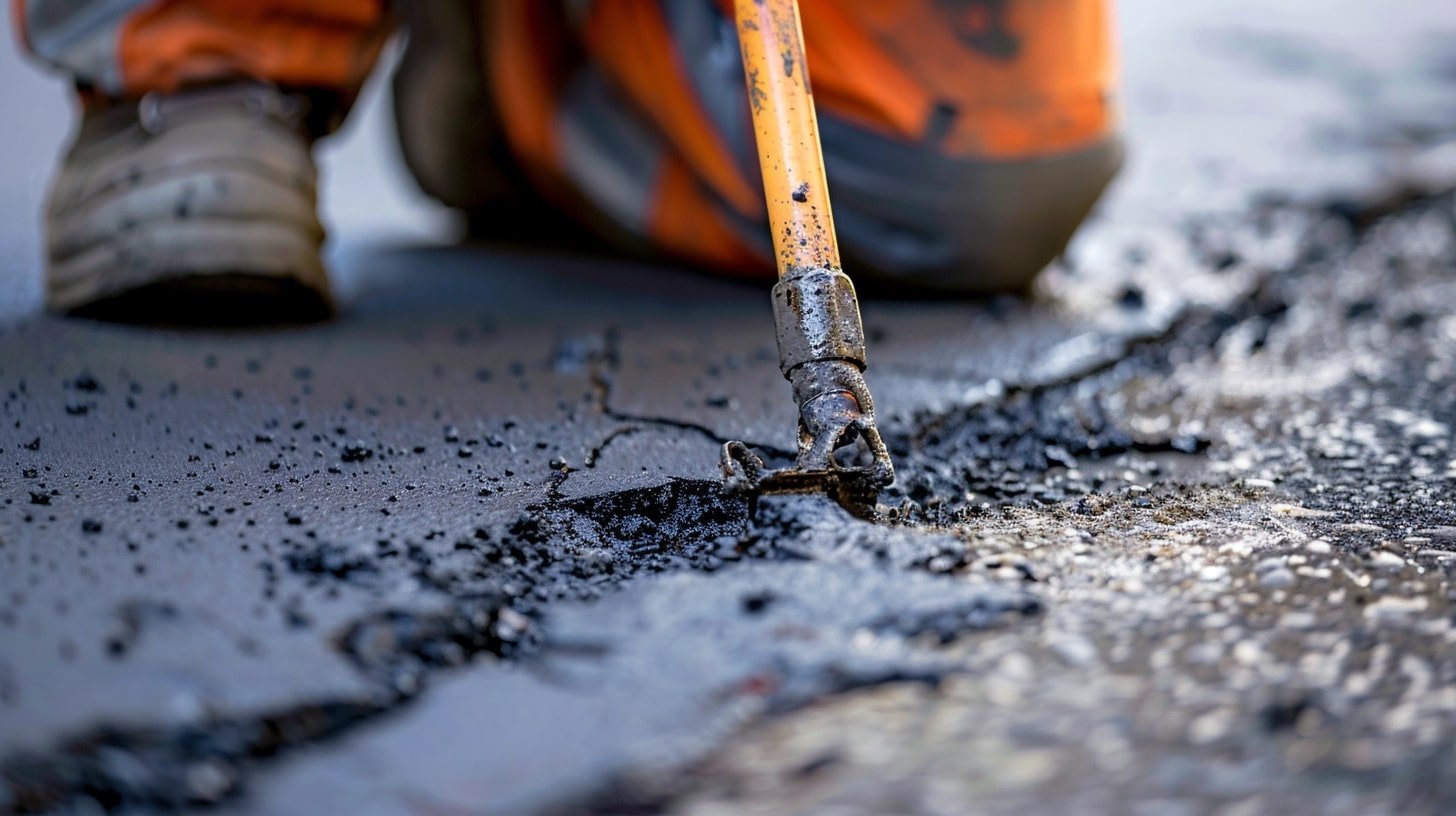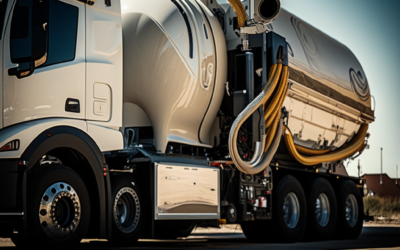When it comes to preserving pavement integrity, addressing cracks early can save a lot of hassle and expense down the road. Hot rubber crack filler stands as a robust solution in the realm of asphalt repair, offering a flexible, durable seal that withstands the elements and the test of time. This article delves into the science and practical benefits of using hot rubber crack filler, helping property owners and maintenance crews understand why it should be a go-to option for repair projects. From enhanced adhesion to its ability to prevent water penetration, hot rubber crack filler is an invaluable tool for extending the life of pavement surfaces.
Table of Contents
Understanding the Importance of Crack Repair
Preventing Further Pavement Damage
Left unattended, small cracks in pavement can quickly expand, leading to more severe damage. As water seeps into these crevices, it can erode the base material, leading to subsidence and potholes. The freeze-thaw cycle exacerbates this issue, as water expands when frozen, prying the asphalt apart and turning minor cracks into major structural concerns. Timely intervention with hot rubber crack filler can prevent these small imperfections from becoming costly repairs.
Extending Pavement Lifespan
Asphalt surfaces are designed to last for years, but their longevity depends on proper maintenance. By sealing cracks with hot rubber filler, the pavement is protected against the ingress of water and debris, which can prolong its functional lifespan. This type of maintenance is not only a matter of aesthetics but also one of safety and asset preservation.
Investing in quality crack repair solutions like hot rubber filler aids in maintaining the structural integrity of the pavement. This preventive approach can defer the need for more extensive resurfacing or complete replacement, thereby offering long-term cost savings. Furthermore, a well-maintained pavement offers a smooth ride, which impacts vehicle operating costs and road safety positively.
Fun Fact: Did you know that hot rubber crack filler remains flexible even in temperatures as low as -20°C? This flexibility is crucial for withstanding the harsh Canadian winters without cracking or losing its seal.
Overall, addressing pavement cracks with an effective solution like hot rubber filler is not just about fixing today’s problems—it’s a strategic move to avoid tomorrow’s costly disruptions.
Advantages of Hot Rubber Crack Filler
Superior Adhesion for Longevity
One of the primary benefits of hot rubber crack filler is its ability to adhere strongly to the existing asphalt. This superior adhesion is critical in creating a long-lasting repair that won’t easily give way to traffic stress or weather changes. This tight seal helps to keep out water, oil, and other materials that can undermine the pavement integrity.
Flexibility in Various Temperatures
Hot rubber crack filler’s flexibility in fluctuating temperatures is essential for a repair material, especially in climates with extreme seasonal weather. This product can expand and contract with the pavement, maintaining a solid seal throughout the year. The ability to move with the pavement structure rather than working against it is what sets hot rubber apart from more rigid repair options.
Waterproofing Capabilities
Another significant advantage is the waterproof nature of hot rubber crack filler. By creating a complete seal, it prevents water from penetrating the asphalt substrate, one of the leading causes of pavement deterioration. The waterproof seal minimizes the risk of freeze-thaw damage, reducing the likelihood of potholes and other types of degradation exacerbated by moisture.
Due to these advantages, hot rubber crack filler is an excellent choice for both preventative maintenance and repairs, ensuring that pavements retain their structural integrity and functionality for longer periods. It is a strategic investment that pays dividends in the form of reduced repair frequency and better overall pavement health.
Key Takeaway: Hot rubber crack filler not only repairs but also strengthens pavement, offering an economical approach to extending the lifespan of asphalt surfaces.
Comparing Hot Rubber Crack Filler to Other Methods
Hot Rubber vs. Cold-Pour Solutions
When evaluating crack fillers, a critical distinction is the comparison between hot rubber and cold-pour solutions. Hot rubber fillers, applied as a hot liquid, cure to form a flexible, durable seal. On the other hand, cold-pour solutions, which are generally asphalt-based emulsions, are less durable and more prone to shrinkage, leading to potential re-cracking.
Cost-Benefit Analysis
While hot rubber crack filler may have a higher initial cost compared to cold-pour options or other temporary fixes, its long-term benefits outweigh these initial expenses. With its long-lasting results, property owners can expect fewer repeat applications, translating to lower total lifetime costs for pavement maintenance.
Longevity and Performance
Studies have shown that hot rubber crack filler can preserve the condition of treated areas for several years, underlining its superiority in terms of longevity and performance vs. alternative methods. It is resilient under heavy loads, resistant to many chemical contaminants, and retains its sealing properties when exposed to the elements, making it a smart choice for a wide range of applications.
Given these factors, hot rubber crack filler is consistently the preferred choice for lasting pavement repairs. It represents an optimal balance of durability, performance, and long-term cost-effectiveness, standing out as the most rational investment for property owners who value prudent, pragmatic maintenance strategies.
Professional Application vs. DIY Approach
When to Call in the Professionals
Crack filling might seem straightforward, but it often requires an expert touch. Professional application ensures that the hot rubber is heated to the correct temperature, applied properly, and allowed to set for optimal performance. Additionally, professionals bring experience in handling complex or widespread damage, and they can identify underlying issues that DIY methods might miss.
Basic Steps for DIY Hot Rubber Crack Filling
If the damage is minimal and localized, a DIY approach can be a cost-effective solution. Here are the fundamental steps for those considering the DIY route:
- Clean the cracks thoroughly to remove debris.
- Heat the hot rubber crack filler according to the manufacturer’s instructions.
- Apply the filler carefully, ensuring it penetrates the full depth of the crack.
- Allow sufficient time for the filler to cool and set before using the pavement.
The right approach depends on the extent of cracking, the owner’s comfort with the process, and the desired outcome. Generally, for extensive or high-load areas, professional application is recommended to ensure longevity and safety.
Remember: Safety is paramount when handling hot materials. Proper protective gear and equipment are essential for a safe DIY project.
Key Takeaway: Whether opting for DIY or professional help, using high-quality materials and following best practices are essential for a successful hot rubber crack filling job.
Preparing Your Pavement for Hot Rubber Filling
Cleaning and Assessing Cracks
Proper preparation is critical to the success of hot rubber crack filling. Begin by assessing the extent of cracking to determine the quantity of filler needed. Next, thoroughly clean the cracks using a power washer or a wire brush to remove debris, vegetation, and loose asphalt particles. Make sure the cracks are dry before application, as moisture can prevent the filler from adhering correctly.
The Right Conditions for Application
For optimal adherence and curing, hot rubber crack filler should be applied in dry weather, typically when ambient temperatures are above 7°C (45°F). This temperature range ensures the filler remains fluid enough for application while allowing it to cool and cure effectively. Avoid application during rainy or overly humid conditions, as moisture can negatively impact the setting process.
Note: If you are scheduling professional services, consider the weather forecast to avoid any unnecessary delays due to unsuitable conditions.
Fun Fact: Some high-performance hot rubber crack fillers can be applied in temperatures as low as 0°C (32°F), thanks to special formulations designed for cooler climates.
Applying Hot Rubber Crack Filler
Safety Measures
When working with hot rubber crack filler, it’s important to prioritize safety. Always wear heat-resistant gloves, long sleeves, and eye protection to guard against splashes of hot material. Ensure that the area is well-ventilated, and be mindful of tripping hazards while moving equipment and materials around the work site.
Equipment Needed
Depending on the size of the job, you may need various tools, including a crack cleaning machine, a melter-applicator, and squeegees or trowels. For larger projects, specialized equipment like a melter kettle with a pour pot or wand applicator may be necessary to streamline the process.
Step-by-Step Application Process
The application process involves several steps to ensure a robust and lasting repair:
- Prepare the equipment, heating the crack filler to the manufacturer-recommended temperature.
- Clean the cracks methodically, ensuring they’re free of debris and completely dry.
- Fill the cracks methodically, applying the hot rubber filler evenly and ensuring full penetration to the bottom of the cracks.
- Smooth the application area, using a squeegee or trowel for a neat finish.
- Allow the hot rubber filler to cool and set without disturbance for the manufacturer-recommended time, usually a few hours.
Remember: Quality and technique are crucial. Investing time in applying hot rubber crack filler correctly can significantly improve the repair’s effectiveness and durability.
Key Takeaway: A meticulous application can make all the difference—the difference between a short-term fix and a long-lasting repair with hot rubber crack filler is often in the details of the application process.
Aftercare and Maintenance
Immediate Post-Application Care
After application, it’s important to protect the area until the crack filler has completely set. Keep traffic, both pedestrian and vehicular, away from the treated area for at least 24 hours, or as recommended by the filler manufacturer. This curing time is vital for the filler to form a solid, enduring bond with the pavement.
Long-Term Pavement Maintenance with Hot Rubber Fill
Maintaining pavements with hot rubber filler isn’t a one-time task. Regular inspections should be conducted to monitor the condition of the repairs and surrounding pavement. Over time, adjacent untreated areas may develop cracks due to natural wear and tear. Address these timely to maintain the integrity of the entire pavement structure.
Pro Tip: Pair crack filling with seal coating for an added layer of protection that can fend off UV rays, oxidization, and spills, further extending the life of your pavement.
Popular Quote: “An ounce of prevention is worth a pound of cure.” Regular upkeep, combined with hot rubber crack filling, can save on future expensive repairs and replacements, keeping pavements in top condition for years to come.
Cost Considerations
Estimating Your Project Cost
The cost of hot rubber crack filling can vary based on several factors, including the size and severity of cracks, the price of raw materials, and regional labour costs. For a rough estimate, one should measure the total linear footage of cracks and account for the depth and width, as these will determine the amount of filler needed. Keep in mind that bulk purchasing and professional services often offer economies of scale, which can be cost-effective for extensive projects.
Factors Influencing Total Expense
Several factors can impact the total price of a hot rubber crack filling project:
- Crack size and extent: More extensive and deeper cracks require more material and possibly additional labour.
- Material costs: Prices for hot rubber compound can fluctuate with market changes.
- Preparation needs: Some surfaces may need more preparation, increasing labour costs.
- Application method: DIY approaches will save on labour but might incur equipment rental fees.
Consideration of these factors will aid in creating a more accurate budget for pavement repairs. Before starting, it’s advisable to request quotes from several providers to compare costs for both DIY and professional options.
Key Takeaway: An upfront investment in high-quality hot rubber crack sealing can lead to substantial savings by avoiding premature pavement replacement and frequent touch-ups.
Common Misconceptions about Hot Rubber Crack Filling
There are several myths surrounding hot rubber crack filler that can lead to confusion or hesitation among potential users. It’s important to address these misconceptions with accurate information to ensure informed decision-making.
Some of the common misconceptions include:
- Hot rubber crack filler is only for use on large roadways, not residential areas.
- The application process is too complex for a DIY approach.
- Hot rubber treatments are too expensive for the average property owner.
Debunking these myths, we find that hot rubber crack filler is versatile and can be beneficial for both large-scale and smaller, residential projects. While professional application ensures the best results, DIY kits are available for minor repairs. Moreover, despite the higher upfront cost, its durability and longevity offer savings over time compared to cheaper, less effective options.
Key Takeaway: Don’t let common myths about hot rubber crack filling deter you; it’s a cost-effective, durable solution suitable for a wide range of applications and skill levels.
Conclusion
Hot rubber crack filler emerges as a standout solution for durable pavement repairs, offering flexibility, strong adhesion, and waterproofing benefits that extend the life of asphalt surfaces. Whether addressing minor cracks in a residential driveway or undertaking large-scale roadway maintenance, hot rubber stands the test of both time and temperature. By providing insight into the preparation, application, and aftercare of hot rubber crack filling, we’ve underscored its value as a cost-effective and reliable approach to pavement maintenance. The initial cost is offset by the longevity and reduced need for frequent repairs, solidifying hot rubber crack filler as a prudent investment for both property owners and maintenance professionals. In conclusion, incorporating this reliable material into your pavement maintenance routine can lead to substantial savings and a safer, more aesthetically pleasing outdoor space.
Remember: A stitch in time saves nine, and the same is true for pavement repairs. Addressing cracks promptly with hot rubber crack filler can prevent further damage, sparing you from more extensive and costly repairs down the line.
FAQs
In this section, we address common questions that arise after learning about hot rubber crack filler and its application in durable pavement repairs.
- Can hot rubber crack filler be used in residential driveways?
Yes, hot rubber crack filler is suitable for residential driveways. It offers the same benefits of durability and protection as it does for commercial and municipal pavements. - How often should I reapply hot rubber crack filler?
The frequency of reapplication depends on factors like climate, traffic, and the quality of the initial application. However, when correctly applied, hot rubber crack filler can last for several years without the need for reapplication. - Is it possible to apply hot rubber crack filler in cold weather?
For optimal performance, hot rubber crack filler should generally be applied in temperatures above 7°C (45°F). However, there are specialized formulas designed for cooler climates that can be applied when temperatures are as low as 0°C (32°F). - Are there environmentally friendly options for hot rubber crack fillers?
Yes, some manufacturers offer eco-friendly hot rubber crack filler options that are made with recycled materials and designed to have a lower environmental impact. - What are the signs that indicate hot rubber crack filler is needed?
The appearance of cracks and fissures in pavement surfaces is a clear sign that crack filler may be needed. If these cracks are left untreated, they can widen and lead to more severe pavement damage.







